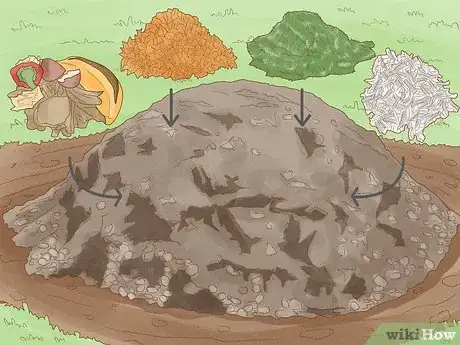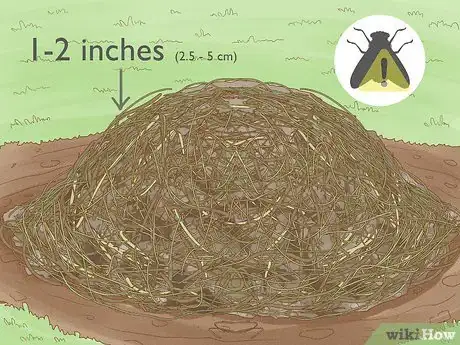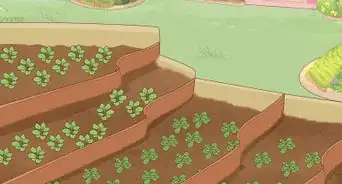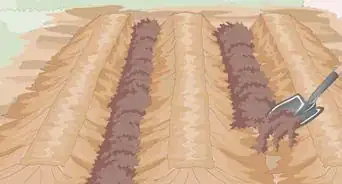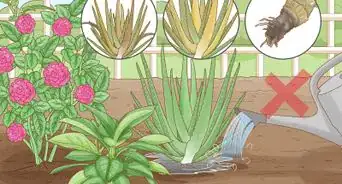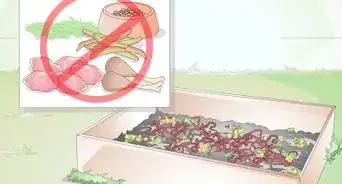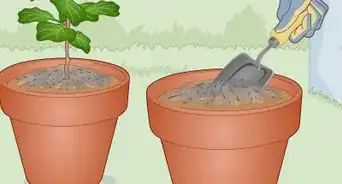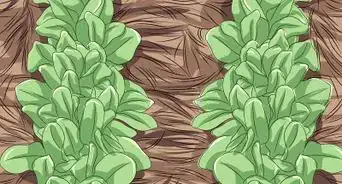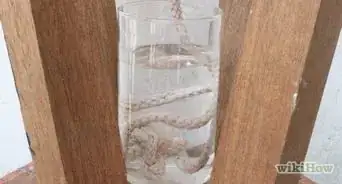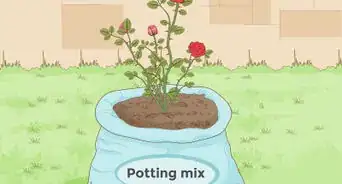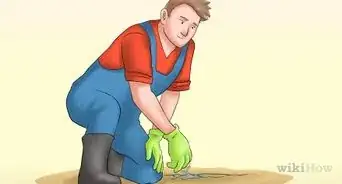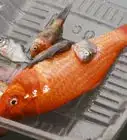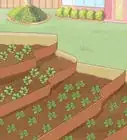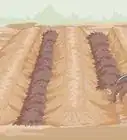This article was co-authored by Artemisia Nursery. Artemisia Nursery is a retail plant nursery in Northeast Los Angeles specializing in California native plants. Artemisia Nursery is a worker-owned small business with plans to become a worker-owned cooperative. In addition to California native plants, Artemisia Nursery offers a selection of succulents, heirloom veggie and herb starts, house plants, pottery, and gardening tools and supplies. Drawing on the knowledge of the founders, Artemisia Nursery also offers consultations, designs, and installations.
wikiHow marks an article as reader-approved once it receives enough positive feedback. In this case, 100% of readers who voted found the article helpful, earning it our reader-approved status.
This article has been viewed 39,487 times.
Compost is a nutrient-rich mixture of organic matter used by gardeners and farmers to help grow strong, healthy plants and flowers. In addition to providing nutrients that help improve depleted soil at no additional cost, compost piles also have the added benefit of recycling many common lawn and household waste products that would otherwise end up in landfills. Although the initial decomposition time can be lengthy, once a compost pile is active, keeping it going is easy. This article explains how to maintain a compost heap.
Steps
-
1Arrange the compost to make an indentation in the top of the pile to hold water. Sprinkle water into the hole with a garden hose when the pile appears dry. It is important to keep the compost pile moist, but not wet because the beneficial organisms that cause the compost to decompose properly cannot survive in a soggy environment.
-
2Turn the compost regularly to ensure proper air circulation which speeds the decomposition process by encouraging beneficial bacteria and fungi growth. More frequent turning will help if you need to speed up the process or if your compost pile has a strong odor.[1]Advertisement
-
3Shred or otherwise cut materials into small pieces before placing them on the compost heap whenever possible. Smaller pieces will decompose more quickly.[2]
-
4Learn which items can be composted. The more items you are able to add to your compost pile, the more compost you will be able to generate. Commonly available items that can be composted include many kitchen wastes, lawn clippings used in thin layers, mulched leaves, disease- and pest-free plants as long as they are not weeds, and shredded paper.[3]
-
5Add straw, pine needles, grass clippings, or plant cuttings if you notice an unpleasant odor. Aerate the pile well.
-
6Add dry chopped or mulched leaves to soak up the excess water if the compost pile is soggy. Aerate the pile well.[4]
-
7Keep a container with a lid and handle under the sink or in the refrigerator. Chop or cut large chunks of kitchen waste before adding them to the container. When the container is full, empty it into the compost pile. If you don't generate large amounts of kitchen waste regularly, purchase biodegradable compost pail liners that can be tossed in the compost bin as well to make keeping the container clean much easier.
-
8Cover any exposed pieces of produce with 1 to 2 inches (2.5 to 5 cm) of grass clippings to discourage flying insects.
Community Q&A
-
QuestionCan I put meat in a compost pile?
 Community AnswerYes, you can put anything that decomposes.
Community AnswerYes, you can put anything that decomposes. -
QuestionCan I put eggshells in?
 LittleJennyWrenCommunity AnswerYes. Since they are from a natural source, eggs are biodegradable and will do well in the compost heap.
LittleJennyWrenCommunity AnswerYes. Since they are from a natural source, eggs are biodegradable and will do well in the compost heap. -
QuestionCan I add paper or not?
 Daniel HerkesCommunity AnswerYou can add shredded paper to your heap. The paper must be shredded and soaked with water first. Place the paper in layers mixed with a green substance (I use grass clippings); this speeds the process. Turn and aerate when the paper really starts to "cook." The paper breaks down just like leaves and shredded wood, but relatively quickly.
Daniel HerkesCommunity AnswerYou can add shredded paper to your heap. The paper must be shredded and soaked with water first. Place the paper in layers mixed with a green substance (I use grass clippings); this speeds the process. Turn and aerate when the paper really starts to "cook." The paper breaks down just like leaves and shredded wood, but relatively quickly.
Things You'll Need
- Garden hose
- Pitchfork
- Container with a lid and handle to carry kitchen waste to the compost pile
References
- ↑ Artemisia Nursery. Plant Nursery & Garden Shop. Expert Interview. 7 August 2020.
- ↑ Artemisia Nursery. Plant Nursery & Garden Shop. Expert Interview. 7 August 2020.
- ↑ Artemisia Nursery. Plant Nursery & Garden Shop. Expert Interview. 7 August 2020.
- ↑ Artemisia Nursery. Plant Nursery & Garden Shop. Expert Interview. 7 August 2020.
- http://eartheasy.com/article_autumn_composting_tips.html
- http://eartheasy.com/grow_compost.html




